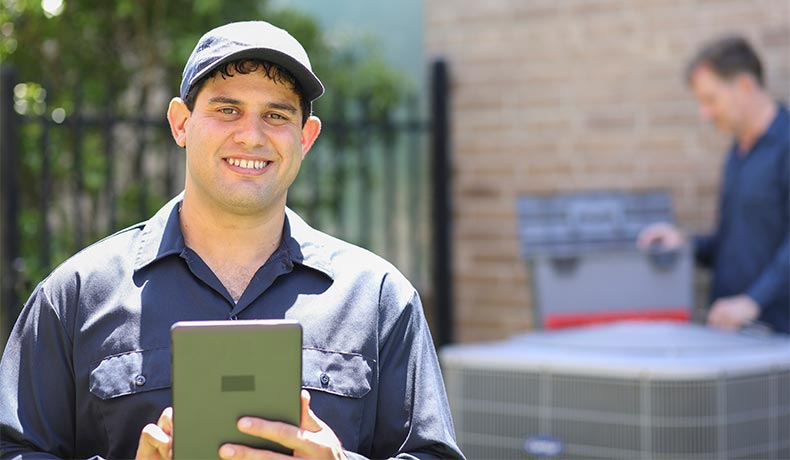1 Plan ahead. If you wait until your existing heating system fails, you won’t be able to find the right contractor or properly plan for a heat pump installation. Most likely you’ll get an updated version of exactly what you have now, which may not be the best choice. At the same time, the full-installed cost of a heat pump often isn’t justified on energy cost savings alone. If you’re planning a renovation, if you have a comfort problem, or if your existing equipment is getting older (15 years is considered a typical lifetime for most furnaces and boilers), you will soon be spending money anyway on a system; now is the time to plan for a partial or full heat pump conversion.
2Find a quality installer. Contact your trusted heating and cooling company and say you’re interested in a heat pump. Don’t have one? Call Tideland. You can also get referrals from family, friends or neighbors.
3Shop around. Once you find an installer request an in-person visit to evaluate your home and get a detailed written quote. Avoid shopping just on price: the quality of the design and installation matters just as much. Make sure they have a reputable track record, and can service equipment when needed. Remember, the lowest bid isn’t always the best value, and a high price doesn’t guarantee competence or quality.
4Insist on load calculations. If you’re getting a ductless heat pump to add to a room over the garage or a sunroom, and it’s clear that it won’t heat the whole house, you don’t necessarily need a load calculation. But if you want to heat your entire home, the proposal should always start with a load calculation. This means the installer measures the rooms and window dimensions and makes a list of the insulation values in attics, walls, and basements, along with window types and direction. All are needed to calculate the amount of necessary heating and cooling to keep the house comfortable (called heating and cooling loads). This is often called a “Manual J” (the name of a widely recognized load calculation procedure). “Bigger” is not “better” when it comes to heat pumps. In fact “too big” can create real performance problems, like system short-cycling and high indoor humidity that can lead to mold. Also note that for multi-zone systems, it is extremely important to calculate loads correctly and avoid indoor units that are too large for the rooms they serve.
5Checklist of important questions to ask a contractor
• Are you licensed and bonded?
• Have you participated in manufacturer training for the systems you install?
• Do you know about available incentives or rebates, and will you provide assistance in applying for them?
• Will you provide a load calculation?
• Will you test and quantify any duct leakage and use a mastic product to air seal the ductwork?
• If exterior “line sets” (piping) will be visible, where will they be placed?
• What type of indoor units are you recommending, where will they be located, and why?
• Do you recommend a wall- mounted thermostat or control? (This is needed for ducted systems. For ductless units serving larger spaces, it can enhance comfort by sensing the temperature in a central location.)
• Will I need to hire my own electrician to provide the electrical work? Will I need any electrical service upgrade to accommodate the heat pumps? (This is not unusual in older houses.)
• Will you use any subcontractors in the process? If so, who are they and what jobs will they do?
• Will you provide training for me on how to properly operate and maintain the system?
• Do you provide a warranty for the systems you install, and how long is it?
Remember when getting a quote
Always ask for a quote that details the equipment model numbers and itemizes any other parts and accessories that you’ll be charged for. If possible, try to get options for two or three alternatives from the same contractor so you can consider a range of options, with some explanation of the differences and the benefits of the various options.


